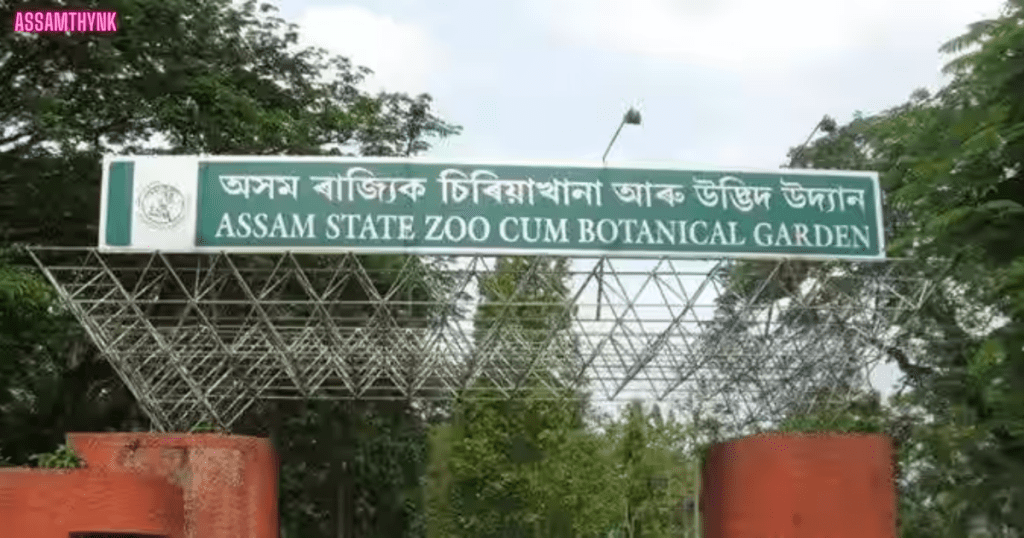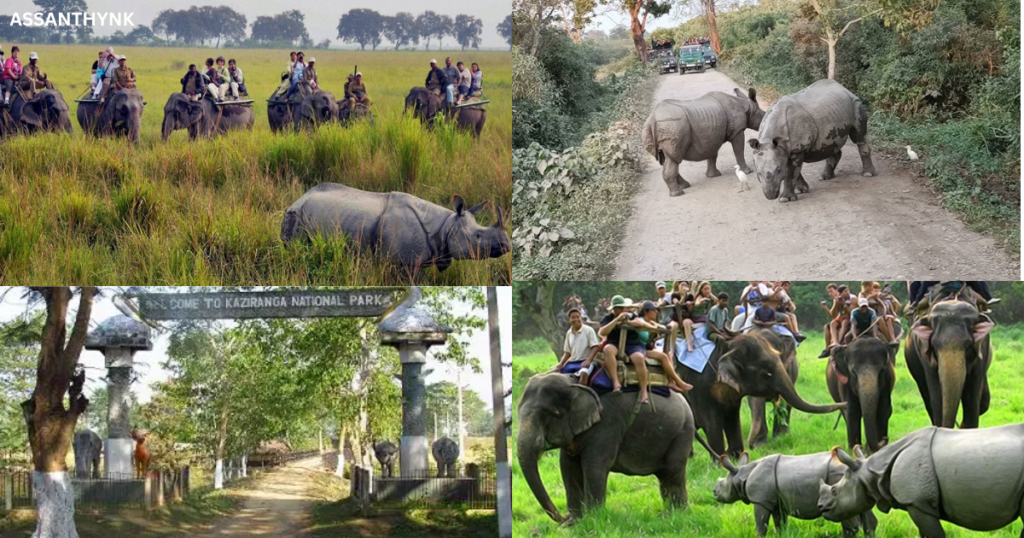Introduction
The Assam State Zoo cum Botanical Garden is one of the most popular attractions in Guwahati, Assam. Nestled in the heart of the city, within the sprawling Hengrabari Reserved Forest, this zoo is a must-visit destination for nature and wildlife lovers. The zoo is the largest in Northeast India, housing a wide variety of flora and fauna native to the region and beyond. If you are a traveler exploring Assam, a visit to this zoo will offer a blend of wildlife, conservation, and nature at its best.
History and Significance
Established in 1957, the Assam State Zoo began as part of the 64th Indian National Congress session held in Guwahati. A temporary animal exhibition was set up for delegates, and after the event, the animals were retained, leading to the formation of the zoo. It was officially opened to the public in 1958 and expanded to include the botanical garden in 1982, thus becoming the Assam State Zoo cum Botanical Garden.
Why Visit to Assam State Zoo cum Botanical Garden
A visit to the Assam State Zoo cum Botanical Garden offers a perfect blend of wildlife, nature, and relaxation in the heart of Guwahati. Home to rare species like the one-horned rhinoceros, clouded leopard, and Hoolock gibbon, the zoo provides an enriching experience for nature lovers and wildlife enthusiasts. The adjoining botanical garden adds to its charm with diverse plant species, creating a peaceful environment. It’s an ideal spot for families, photographers, and researchers. With well-maintained pathways and informative exhibits, the zoo promotes conservation awareness while offering a refreshing escape from the city’s hustle and bustle.
Location and Accessibility
The zoo is conveniently located about 6 km from Guwahati city center, making it easily accessible for tourists.
- Address: R. G. Baruah Road, Guwahati, Assam 781005
- Nearest Airport: Lokpriya Gopinath Bordoloi International Airport (about 25 km away)
- Nearest Railway Station: Guwahati Railway Station (about 7 km away)
- Transport Options: Auto-rickshaws, taxis, city buses, and app-based cabs are available to reach the zoo.
Timings and Entry Fee
The Assam State Zoo cum Botanical Garden is open throughout the week except for Fridays.
- Timings: 8:00 AM – 4:30 PM (October to March), 7:00 AM – 4:30 PM (April to September)
- Entry Fee:
- Adults: INR 30
- Children: INR 10
- Foreign Tourists: INR 100
- Camera Fee: INR 100 (still camera), INR 500 (video camera)
Flora and Fauna
Wildlife Attractions
The Assam State Zoo is home to over 113 species of animals, birds, and reptiles. Some of the top attractions include:
- One-Horned Rhinoceros: Assam’s pride, this endangered species is a major highlight of the zoo.
- Royal Bengal Tiger: The majestic big cat is a top attraction for visitors.
- Hoolock Gibbon: India’s only ape, found in Northeast India, is well-preserved here.
- Leopards and Clouded Leopards: Known for their elusive nature, these cats fascinate visitors.
- Asiatic Lions: One of the rare species in the zoo.
- Elephants: Indian elephants, often seen in herds, are a delight for visitors.
- Himalayan Black Bear: A rare species found in the Himalayan regions.
- Gaur (Indian Bison): A powerful bovine species indigenous to India.
- Deer Species: Barking Deer, Swamp Deer, and Sambar Deer.
- Exotic Birds: The zoo hosts various birds like hornbills, parrots, pelicans, and peafowls.
The Botanical Garden
The Botanical Garden is an integral part of the Assam State Zoo, offering a peaceful retreat amid nature. It houses rare and exotic plant species, including medicinal plants, orchids, and indigenous flora. The lush green environment provides a perfect setting for nature walks and photography.
Yes, it is safe to travel to the Assam State Zoo cum Botanical Garden. The zoo is well-maintained with security personnel, CCTV surveillance, and clearly marked pathways, ensuring a secure and comfortable visit for tourists. Safety guidelines are in place, including designated enclosures for animals and proper visitor instructions. It is advisable to follow zoo regulations, avoid feeding animals, and stay within marked areas. The premises are family-friendly, making it a great destination for visitors of all ages. With basic amenities like food stalls, rest areas, and first-aid facilities, the zoo provides a safe and enjoyable experience.
Conservation Efforts
The Assam State Zoo cum Botanical Garden plays a crucial role in wildlife conservation, focusing on the protection and breeding of endangered species. It is home to the Indian one-horned rhinoceros, clouded leopard, Hoolock gibbon, and other rare animals, contributing to their preservation through dedicated breeding programs. The zoo collaborates with national and international wildlife organizations to implement scientific management practices, ensuring the well-being of its inhabitants. Additionally, it conducts awareness programs and educational tours to educate visitors about the importance of conservation and biodiversity.
Apart from wildlife protection, the botanical garden within the zoo works towards preserving the region’s rich plant diversity. It houses a variety of indigenous and exotic plant species, promoting environmental sustainability. Reforestation programs, medicinal plant conservation, and habitat restoration projects are actively carried out. Through these combined efforts, the Assam State Zoo cum Botanical Garden serves as a vital center for conservation, research, and education in Northeast India.
Best Time to Visit
The best time to visit the Assam State Zoo cum Botanical Garden is during the winter and early spring months, from November to March. During this period, the weather in Guwahati is pleasant, with temperatures ranging between 10°C to 25°C, making it comfortable for exploring the zoo and botanical garden without the discomfort of heat or humidity. The cool breeze, clear skies, and lush greenery create a refreshing atmosphere, perfect for a relaxed outing with family or friends. Animals are also more active during the cooler months, enhancing the overall experience.
Visiting during summer (April to June) can be challenging due to high temperatures and humidity, while the monsoon season (July to September) brings heavy rainfall, making it difficult to walk around the zoo. However, the post-monsoon period, from October to early November, is another great time to visit, as the greenery is at its peak, and the surroundings look vibrant after the rains.
Things to Do at Assam State Zoo
- Wildlife Photography: Capture the beauty of the exotic animals and lush greenery.
- Nature Walks: Enjoy walking through the botanical garden and exploring rare plant species.
- Educational Tours: Learn about conservation efforts and the importance of biodiversity.
- Picnic Spots: The zoo has designated areas for families and groups to relax and enjoy.
- Birdwatching: The zoo houses an impressive variety of birds, making it a haven for birdwatchers.
Travel Tips
- Wear Comfortable Shoes: The zoo covers a large area, so be prepared for long walks.
- Carry Water and Snacks: Although there are small food stalls, carrying your own water is advisable.
- Avoid Littering: Maintain the zoo’s cleanliness and respect nature.
- Follow Guidelines: Do not feed animals, and follow the rules set by zoo authorities.
- Plan a Morning Visit: Animals are more active during the morning hours, making it the best time for exploration.
Nearby Attractions
The Assam State Zoo cum Botanical Garden, located in Guwahati, is not only a haven for nature and wildlife lovers but also serves as a gateway to many fascinating attractions nearby. From ancient temples to serene river islands, visitors can explore a variety of places that showcase Assam’s rich culture and natural beauty.
1. Kamakhya Temple
One of the most famous religious sites in India, the Kamakhya Temple is a must-visit attraction near the Assam State Zoo cum Botanical Garden. Located atop the Nilachal Hill, this sacred temple is dedicated to Goddess Kamakhya and is an important Shakti Peetha. The temple attracts thousands of devotees, especially during the Ambubachi Mela, a grand festival held in June. The temple’s stunning architecture, spiritual significance, and breathtaking views of Guwahati city make it a perfect place to visit after exploring the zoo.
2. Umananda Island
Situated in the middle of the Brahmaputra River, Umananda Island is known as the world’s smallest inhabited river island. Home to the ancient Umananda Temple, dedicated to Lord Shiva, the island offers a peaceful retreat away from the city’s hustle and bustle. Visitors can take a ferry from Kachari Ghat to reach the island and enjoy the scenic beauty of the river, along with sightings of the endangered Gangetic dolphins. The serene atmosphere and cultural heritage of Umananda Island make it a perfect spot for those looking to relax and connect with nature.
3. Assam State Museum
For history enthusiasts, the Assam State Museum is an excellent place to explore the rich heritage of Assam and Northeast India. Located in the heart of Guwahati, the museum houses an impressive collection of sculptures, manuscripts, tribal artifacts, and traditional Assamese textiles. A visit to the museum provides a deep insight into Assam’s history, making it an enriching experience after exploring the zoo and botanical garden.
4. Pobitora Wildlife Sanctuary
Located about 50 km from Guwahati, Pobitora Wildlife Sanctuary is a paradise for wildlife lovers. Known for having one of the highest densities of the Indian one-horned rhinoceros, the sanctuary offers jeep safaris and elephant rides for visitors to witness these magnificent creatures up close. It is also a great place for birdwatching, especially during the winter months when migratory birds arrive.
Top 10 FAQs – Assam State Zoo cum Botanical Garden
- Where is the Assam State Zoo cum Botanical Garden located?
- It is located in Hengrabari Reserve Forest, Guwahati, Assam, about 6 km from the city center.
- What are the visiting hours of the zoo?
- The zoo is open from 8:00 AM to 4:30 PM (October to March) and 8:00 AM to 5:00 PM (April to September). It remains closed on Fridays.
- What is the entry fee for the Assam State Zoo cum Botanical Garden?
- The approximate entry fees are ₹30 for adults and ₹10 for children, with additional charges for camera use and vehicles.
- What animals can be seen in the zoo?
- The zoo houses one-horned rhinoceros, Royal Bengal tiger, clouded leopard, Hoolock gibbon, elephants, and exotic birds among many others.
- Is photography allowed inside the zoo?
- Yes, photography is allowed, but there may be additional charges for professional cameras.
- Are there food stalls inside the zoo?
- Yes, there are food stalls and refreshment areas inside the zoo for visitors.
- How long does it take to explore the zoo completely?
- On average, it takes about 3 to 4 hours to explore the entire zoo and botanical garden.
- Is the zoo wheelchair accessible?
- Yes, the zoo has wheelchair-friendly paths, but it is advisable to check with the authorities for assistance.
- What is the best time to visit the zoo?
- The best time to visit is November to March, when the weather is pleasant, and animals are more active.
- Are guided tours available in the zoo?
- While there are no official guided tours, zoo staff and signboards provide information about the animals and plants.
Conclusion
The Assam State Zoo cum Botanical Garden is a must-visit for travelers seeking to explore Assam’s diverse wildlife and flora. Whether you are a wildlife enthusiast, nature lover, or a family on vacation, the zoo offers an engaging and educational experience. With its conservation initiatives, rare animal species, and serene botanical garden, the zoo is a perfect destination to immerse yourself in the natural beauty of Northeast India.






